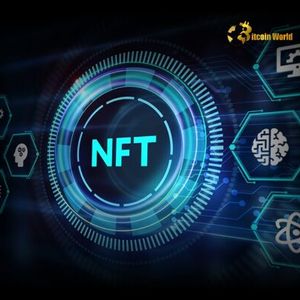Crypto researcher SMQKE (@SMQKEDQG) recently shared a post on X, presenting a detailed look into the deflationary mechanics of XRP using official documentation and academic citations. Through a series of annotated excerpts, SMQKE emphasized that XRP’s supply is limited and constantly declining due to its built-in burn mechanism , which removes a small amount of XRP from circulation with each transaction. A cited source from Ripple notes that the XRP token “cannot be mined and its quantity will constantly decrease,” drawing attention to how digital scarcity may influence price behavior over time, potentially causing a supply shock as long-term holders accumulate and hold. As the excerpt continued, “everything that exists in a limited amount and is actively used is becoming more expensive,” positioning XRP’s deflationary structure as a potential value driver as network utility increases. XRP = Deflationary Which means: “…XRP token cannot be mined and its quantity will constantly decrease, and everything that exists in a limited amount and is actively used is becoming more expensive, therefore, with the growth of the network, the XRP price will increase… pic.twitter.com/CsJj6UK6e1 — SMQKE (@SMQKEDQG) May 26, 2025 Mechanism of Deflation and Its Economic Role The XRP Ledger (XRPL) incorporates a fixed-supply model where no new tokens can be created. Each transaction incurs a minimal fee, typically 0.00001 XRP, which is permanently burned. This automatic reduction in supply is not only consistent but irreversible, embedding deflation into the currency’s architecture. According to documentation referenced by SMQKE, XRP is not collected or recycled through transaction fees but is permanently destroyed, aligning it with deflationary tokenomics. This contrasts with inflationary models where token supply can expand over time. Over the long term, this gradual decrease in circulating supply contributes to scarcity, particularly as network usage scales. We are on twitter, follow us to connect with us :- @TimesTabloid1 — TimesTabloid (@TimesTabloid1) July 15, 2023 Positioning XRP Within a Competitive Landscape A comparative analysis of XRP and its competitors, including Stellar (XLM), USDC, and central bank digital currencies (CBDCs), highlights XRP’s unique structural advantages. While competitors face limitations such as centralized control, high fees, or limited adoption, XRP’s interoperability and decentralized settlement design offer more resilient long-term prospects. One of the images states that XRP “maintains a competitive edge through its interoperability features and deflationary tokenomics.” Ripple’s strategy includes expanding multichain functionality through partnerships with platforms like Axelar , which improves liquidity and network reach. When these enhancements combine with a declining token supply, they strengthen XRP’s position as a cross-border payment solution. Integration With RippleNet and Broader System Design Ripple’s ecosystem is built on the XRPL and RippleNet, with XRP serving a functional role in transaction settlements. The payment process relies on consensus through trusted validators, with XRP burned as part of each settlement. SMQKE’s collected sources underline that XRP’s deflationary model is deliberate and structural. As SMQKE’s report shows, this deflation is embedded in Ripple’s broader infrastructure, not just a secondary feature. Disclaimer : This content is meant to inform and should not be considered financial advice. The views expressed in this article may include the author’s personal opinions and do not represent Times Tabloid’s opinion. Readers are urged to do in-depth research before making any investment decisions. Any action taken by the reader is strictly at their own risk. Times Tabloid is not responsible for any financial losses. Follow us on X , Facebook , Telegram , and Google News The post New Documents: XRP Is Deflationary, Cannot be Mined, Quantity Will Constantly Decrease appeared first on Times Tabloid .


















